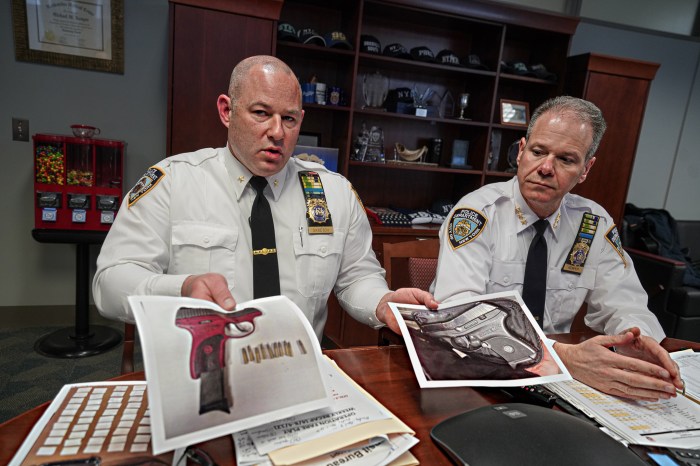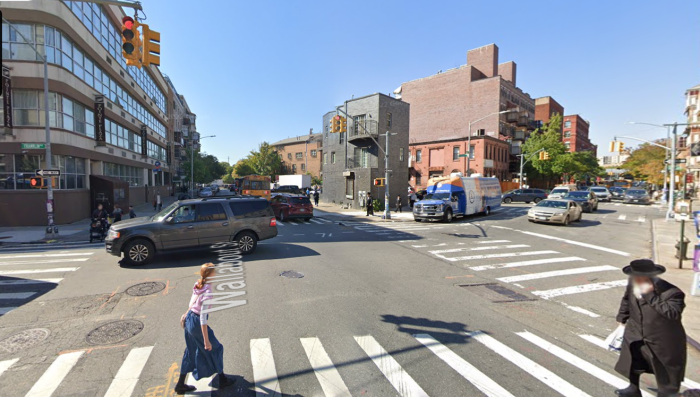
New York City set a record low for traffic deaths in 2017 — for the fourth year in a row.
The steady drop in deaths on city streets — from 299 in 2013 to 214 deaths this past year — is a decisive achievement for Mayor Bill de Blasio’s Vision Zero initiative, the mayor boasted on Monday. Most notable about the figures is the steep, 32-percent decline in pedestrian deaths between last year and 2016, he said.
These totals do not include the eight pedestrians killed in the Oct. 31 terror attack in lower Manhattan.
“Vision Zero has been one of the things that has worked best for this city,” de Blasio said at a news conference at an NYPD garage in Maspeth, Queens. “It’s been one of the game-changes; it’s been one of the life-savers.”
The mayor’s initiative to bring traffic deaths in New York City to zero relies on a mix of street redesign, enforcement and public awareness campaigns. As a result, the citywide speed limit was reduced from 30 mph to 25 mph; more cameras were used to enforce speeding near schools and more parking-protected bike lanes were installed.
Despite the successes, the city has struggled to curb the number of cycling deaths as more and more commuters take to bikes to get around. Cycling deaths have increased for two years in a row, according to city data, from 14 cycling deaths in 2015 to at least 21 deaths last year.
Eric Beaton, the city Department of Transportation’s deputy commissioner for transportation, planning and management, said despite the increase, the risks to cyclists in the city are down — especially when they travel in designated bike lanes.
“We’ve seen so many more people cycling around the city, which we think is actually very good for safety overall,” Beaton told reporters after the news conference. “One of the things we see is that many fewer fatalities happen in bike lanes than outside of bike lanes; that’s why we want to make sure we keep expanding bike lane to make the city safer for cyclists.”
City Councilman Jimmy Van Bramer, whose Queens district includes large swaths of Queens Boulevard, praised the successes of Vision Zero, but said the increase in cyclist deaths was troubling.
“More people are cycling, but we can’t accept as normal that cyclists will be killed and maimed just because more people are cycling,” said Van Bramer, echoing the call for more protected bike lanes. “We won’t have achieved Vision Zero until all cyclists are safe wherever they are cycling.”
Paul Steely White, executive director of the advocacy group Transportation Alternatives, said the city must tackle cycling deaths with the same vigor and focus as pedestrian safety.
“There’s this idea that the mayor has not been as adamant about saving bicyclists’ lives as he has been for saving the lives of pedestrians; he’s more often made excuses for motorists that block bike lanes than he’s admonished them for doing so,” White said.
At the news conference, which included Van Bramer as well as City Council members Robert Holden and Ydanis Rodriguez, de Blasio pledged to continue the mission of Vision Zero and “go deeper because there’s a lot more lives to be saved,” but did not outline any future plans.
He also did not take questions from reporters, but aides said there would be a future announcement with specifics.
De Blasio said he would continue calling on the state Legislature for permission to install more speed cameras around schools.
He also said the $100 million spent fixing Queens Boulevard — known for years as the “Boulevard of Death” for its high number of pedestrian fatalities — has paid off.
“Over the last three years, we have not lost a single pedestrian or cyclist,” de Blasio said. “The Boulevard of Death is now the Boulevard of Life.”
Former Mayor Michael Bloomberg had also taken on Queens Boulevard, making a series of engineering and safety changes to the roadway during his administration.
“I think the bike lanes have made it safer,” said Pam Shakya, an 18-year-old Hunter College student from Forest Hills, as she waited to cross Queens Boulevard. “I’ve lived here quite a while and I think it’s safer.”
Alla Bimiamimova of Rego Park said sometimes people do not pay attention as they cross the busy roadway.
“A lot of people — old people, young people — they don’t follow the rules. They just go,” she said.

















